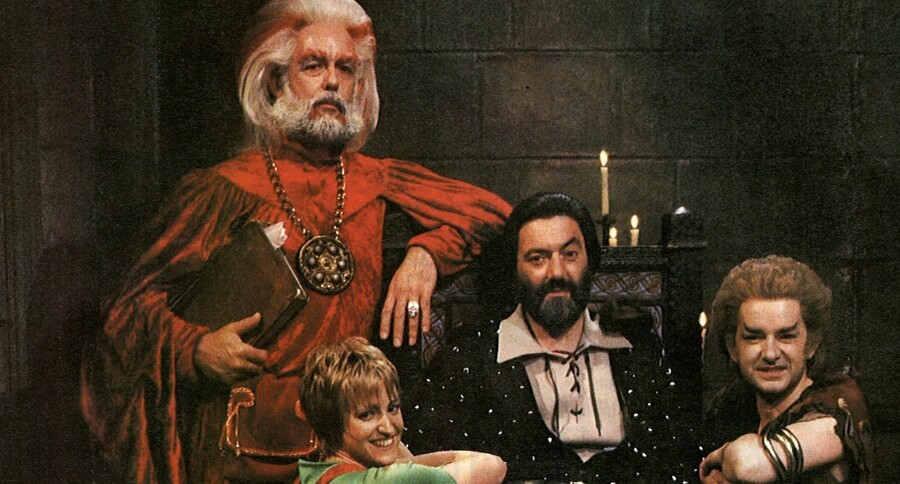
35 years ago on this day, Knightmare first graced UK television screens, bringing with it fantasy realms filled with captivating characters and hidden dangers. It remains a seminal piece of TV history, and it was close as kids got back in the '80s to a "video game TV show."
For those of you who aren't aware, the show's format involved a team of four children – one of whom takes the role of the hero and wears a helmet that blocks their vision, while the other three act as guides – entering a fantasy world where they must overcome puzzles, collect items and interact with characters.
The reason for the helmet was simple; the locations in Knightmare were created using a combination of hand-drawn art and crude CGI, laid onto the screen using blue screen chroma key technology – while the actors in the scenes were real, the locations were not.
The three kids in the studio were given a live feed of the composite image and were expected to explain the make-believe surroundings to the 'hero' wearing the helmet. Knightmare straddled the line between a game show and virtual reality (it was later adapted using VR, but the pilot was never commissioned), and it's easy to see why it captured the imaginations of an entire generation. The show ran from 1987 to 1994, and even got its own video game on popular home formats of the period. More recently, it returned as a live show.
The official Twitter account for the show has posted a series of tweets which explain the origins of the project, which, unsurprisingly, can be traced back to the video games of the era.
Creator Tim Child explains:
As a journalist, I'd produced a regular weekly review of the fledgling UK 8-bit home computer games industry. Much of this industry seemed to be originating from within Anglia's regional boundaries - Sinclair and Acorn were both in Cambridge; Commodore had its UK HQ in Northamptonshire.
Ultimate's Atic Atac and Hewson's 48k interactive movie, Dragontorc, had convinced me that if adventure gaming was possible on the Spectrum, the power of modern television could surely capitalise on the idea and revolutionise the genre. The idea for Knightmare was born.
Next, several key problems had to be solved. How to create a complex artificial world? How to populate it? How to experience it? How to explore it? How to make it work as television?
From the outset, I wanted to use computer graphics to create my first dungeon. But in 1985, CGI was in its infancy. What I needed wasn't the crude graphics that current computer games were offering. It was the fabulous, atmospheric fantasy illustrations on the packaging.
Next came a much bigger step. I wanted to make a full 15-minute pilot to show to Children's ITV. The pilot would need to illustrate gameplay and programme presentation. Dungeon Doom was recorded in early 1986. Hugo Myatt introduced the show.
The finished results were edited together but something was missing. I decided to improve the opening titles and change the show's name. 'Knightmare' seemed to say it all about a scary dungeon game which used a knight's helmet as a blindfold.
The finished pilot was viewed by the ITV Children's Committee. Nothing like it had been seen before. Searching for something fresh, the committee decided to risk a short series of eight half-hour episodes.
You can read up on the full history of the series here.
[source twitter.com]






Comments 4
Used to love this show as a kid, great theme tune too. Side step to the left, walk forward, stop... simple days, ha. Shame the video game version wasn't great, my friend had it on his Amstrad and we got nowhere!
I used to love this show. As a young child I really got into it, I found it a bit scary. I think it was that life force sequence when you get close to death.
@Ristar24 Yeah, the Amstrad/Speccy (double sided tape!) game was not great — outside of the helmet it bore almost no resemblance to the show — and yeah, I could never get beyond the second room.
@GravyThief The original skin-peeling skull animation was the stuff of (k)nightmares — well, most of the show was. I used to think if you died in the show, you died for real.
Show Comments
Leave A Comment
Hold on there, you need to login to post a comment...